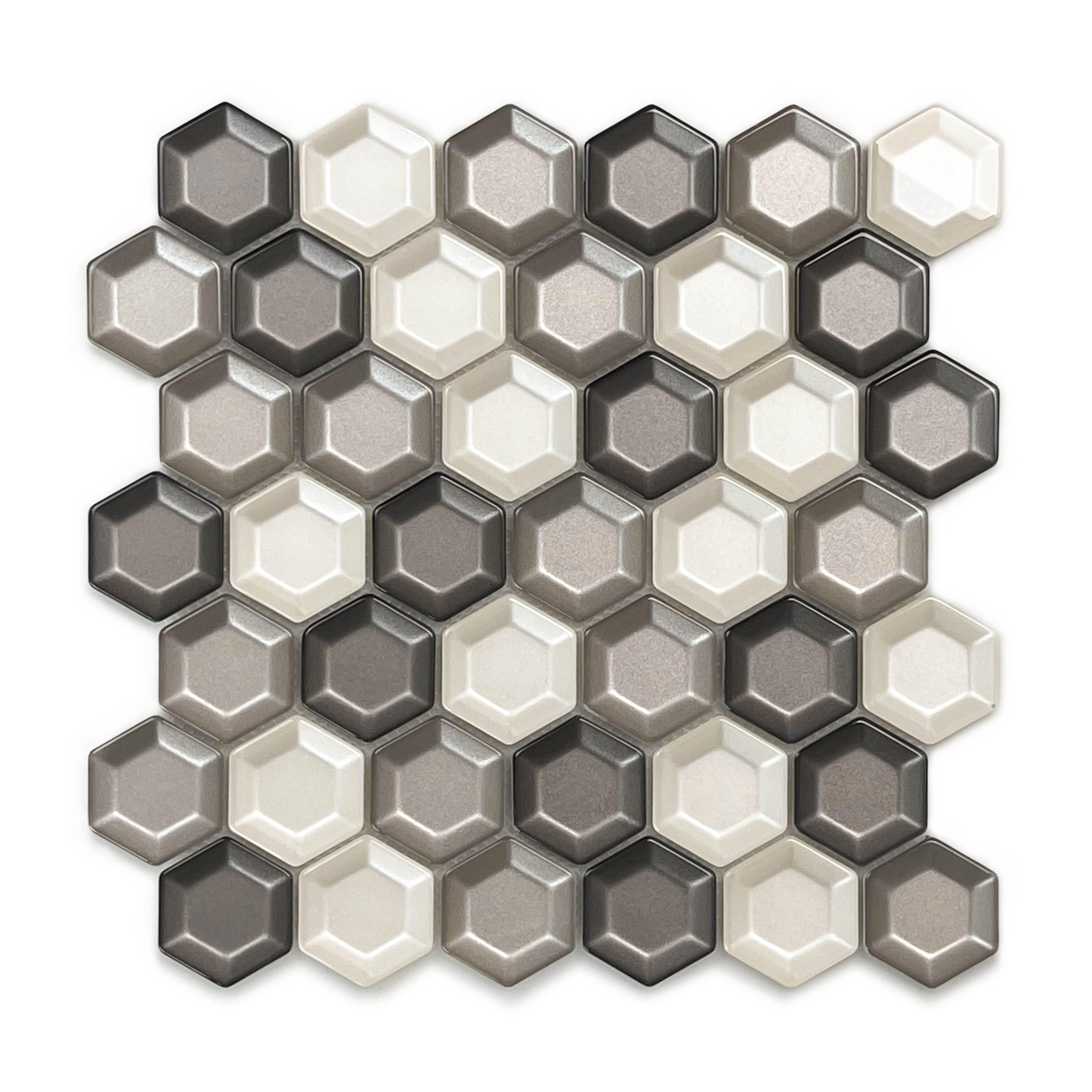The Basic Knowledge of Metal Mosaic You Should Know
March 16,2022
Mosaics can be divided into: ceramic mosaics, stone mosaics, metal mosaics, glass mosaics, etc, which are widely used in our daily life. Next, we will introduce the size and construction technology of metal mosaic.
What types of metal mosaics are there?

The metal mosaics we use are divided into stainless steel mosaics, aluminum-plastic plate mosaics, and aluminum alloy mosaics. Among them, stainless steel mosaics account for a small part of metal mosaics in the market, because stainless steel mosaics will react chemically with oxygen and become dim, but it is still popular with some people because of its advantages of low price and wear resistance.
There are many kinds of mosaics on the market with rich colors, which greatly enriches the market of home building decoration materials and brings more colors to people's lives. .
Aluminum-plastic panel mosaic is one of the mainstream metal mosaics in 2010. It is widely loved by consumers because of its many types of patterns, rich colors, lighter texture and simpler engineering during collage.
The particles of aluminum alloy mosaic are all aluminum, its strength is better than the former two, and it can be processed twice, and can be used as phantom, laser and other decorations, but because of its high cost and relatively single color, so There is no aluminum composite panel mosaic that is popular with consumers.
What sizes do montage copper canyon metallic mosaics come in?
The commonly used sizes of general mosaics are as follows: 9.5x9.5㎜, 10x10㎜, 15x15㎜, 20x20㎜, etc. The thickness is mainly 1㎜, 2㎜24㎜, 5㎜, 6㎜, 6㎜, 8㎜, 10㎜, 12mm, etc. The thickness of metal mosaic is generally between 4-8mm.
How does metallic basalt limestone mix mosaic produce?
The most intuitive understanding of metal mosaic is to replace the past tile mosaic material with metal material, the texture is stronger, and it has a strong self-style, which has attracted much attention once it is launched.
In the second step, you can peel off the adhesive of the metal mosaic, and then stick it according to the position of the line. Do not use force at this time, so as to avoid small-scale adjustments in the uneven areas later.
The third step is that after all the metal mosaics are laid, you can use a ruler to gently flatten the surface. Be careful not to use force to avoid breaking the metal surface.
In the fourth step, you can use a small rubber hammer to lightly tap the surface of the metal mosaic to make the adhesive and the wall stick more firmly, especially at the edges.
The fifth step, the metal mosaic does not need to be seamed, so after paving, just tear off the protective film on the surface of the mosaic, and then wipe it with a soft cloth.
Here is a special reminder, because it is a metal material, in order not to have a chemical reaction, be careful not to use acidic and alkaline cleaning agents for cleaning to avoid blackening and rusting of the mosaic surface.
To sum up
The above is the basic knowledge of metallic random silver mix mosaic we have summarized. If you have more needs, please feel free to contact us.